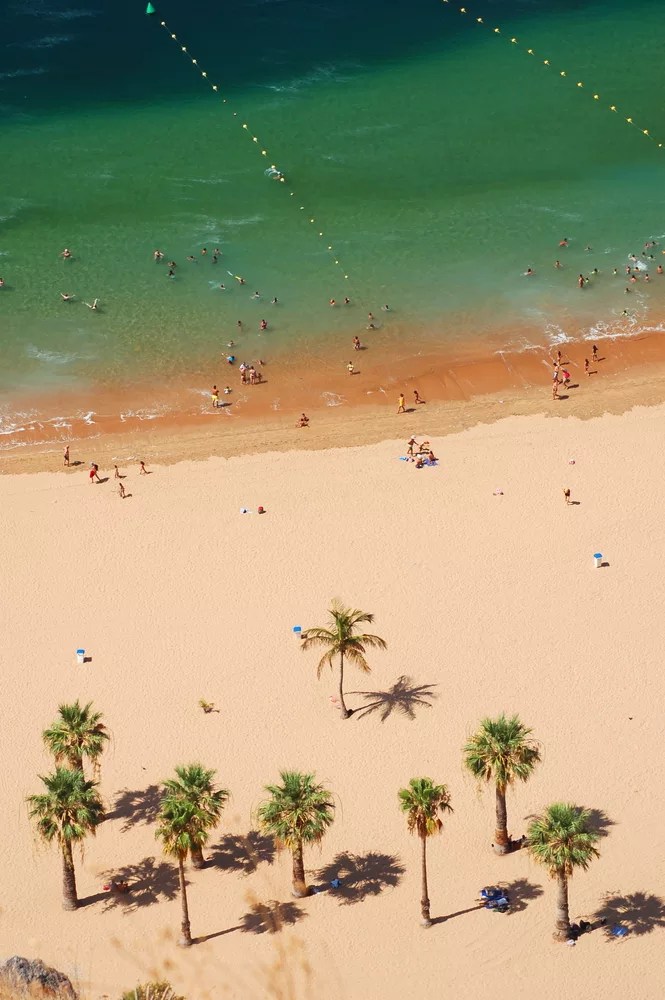One of the most frequented beaches in Tenerife, Spain, is Playa de Las Teresitas, located in the Canary Islands. This hotspot, however, is far from a naturally occurring formation. Instead, it was meticulously crafted in the 1970s, using an impressive 270,000 tons of sand imported from Western Sahara.
Warm sand and palm trees on Playa de las Teresitas Beach, Tenerife
Photo by depositphotos.com
Historically, Playa de Las Teresitas bore little resemblance to its current state, popular among tourists. It was primarily a rocky beach with black volcanic sand, and its waters were known for their harsh, dangerous waves. Being the nearest beach to Santa Cruz, it endured the brunt of the urban expansion, with construction companies slowly eroding away the beaches for their sand needs. The growing Port of Santa Cruz de Tenerife was also claiming more of the shoreline.
By 1953, the Santa Cruz City Council decided it was time to construct an artificial beach at Las Teresitas. After eight years of planning and a further four years of approval processes, construction began. The beach had to be defended from strong waves, requiring the construction of a substantial breakwater and the creation of a sea step to stop the water from carrying away the newly deposited sand. Sahara Desert sand was shipped over in large quantities, about 270,000 tons, to form a beach stretching 1.3 kilometers in length and 80 meters in width. When the beach was unveiled in 1973, it quickly garnered favor among locals and tourists.

Picturesque gorgeous Teresitas beach on Tenerife island, Spain
Photo by depositphotos.com
In the Canary Islands, sand from Western Sahara is consistently imported for the purpose of beach rejuvenation and for large-scale construction projects. Regrettably, a significant amount of this sand is procured illegally.
ENACT Africa, an organization dedicated to battling transnational crime in Africa, reveals the impact of such practices. “The sand extraction brings multiple consequences for Western Sahara and its people. Economically, mainly Moroccan authorities and companies profit from this trade. Environmentally, extraction scars the landscape, eroding sensitive ecosystems, just as it does globally,” the organization explains.
Contrary to what many believe, sand is not an infinite resource. The world is rapidly depleting its reserves due to excessive construction demand. It’s estimated that 50 billion metric…
Click Here to Read the Full Original Article at Unusual Places…
